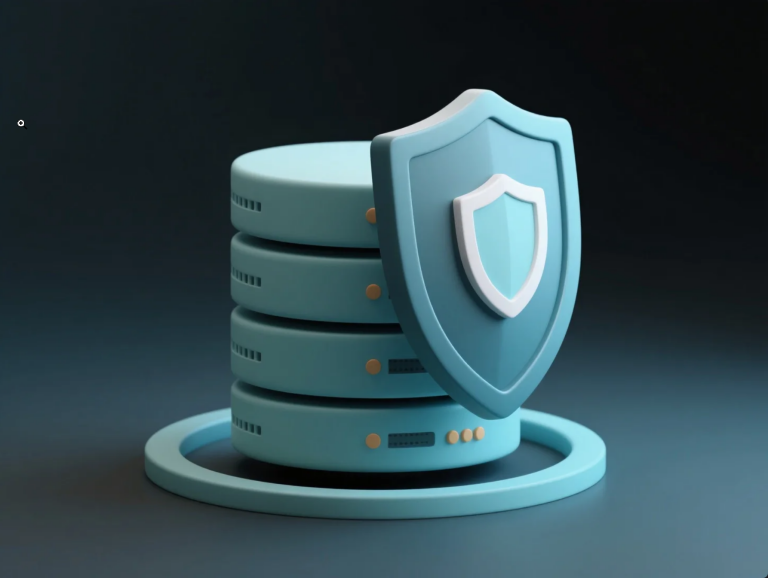
Okay, let's talk shop about keeping your website safe and sound. You've probably enabled a Content Delivery Network (CDN), maybe something slick like But hang on a second... is that the entire security story when it comes to your CDN? Is robust DDoS protection the be-all and end-all? Think of website security like an onion (or maybe a medieval castle!). It has layers upon layers. While your CDN’s DDoS mitigation is like having massive, imposing outer walls and a deep moat – absolutely crucial – have you checked the integrity of the inner gates, the locks on the windows, or even how the supplies are being delivered inside the castle walls? That's what we're diving into today. We're going beyond DDoS protection to uncover some often-overlooked security aspects directly tied to your CDN configuration, specifically focusing on TLS/SSL settings and Caching rules. Misconfiguring these can, believe it or not, sometimes leave you unexpectedly vulnerable, even with that mighty DDoS shield in place. Ready to peel back some layers and make sure your CDN setup is truly as secure as you think? Let's get into it! Layer 1: TLS/SSL Configuration – More Than Just a Padlock Icon Getting that little padlock icon in the browser bar via HTTPS is non-negotiable these days. It encrypts traffic between the user and your site (well, usually the CDN edge), builds trust, and is even a minor Google ranking factor. CDNs make deploying SSL/TLS certificates much easier, which is fantastic. But simply having HTTPS enabled via your CDN isn't enough. We need to look closer: Are You Using Strong Locks? (Protocols & Ciphers at the Edge)Your CDN edge server is where the secure connection with the user's browser is established. But how secure is that connection? Is your CDN configured to only allow modern, strong TLS protocols (ideally TLS 1.2 and TLS 1.3)? Or is it still allowing outdated, vulnerable protocols like SSLv3, TLS 1.0, or TLS 1.1 just for the sake of "compatibility"? Using these old protocols is like putting a flimsy, easily-picked lock on a bank vault – it opens the door to known vulnerabilities like POODLE or BEAST. Similarly, the "cipher suites" negotiated (the specific encryption algorithms used) need to be strong and current. How to Check: Use an online tool like Qualys SSL Labs' SSL Server Test. Enter your domain name. This tool analyzes the configuration presented by the server handling the connection (which is your CDN edge server) and will flag weak protocols or ciphers. Aim for that A or A+ rating! Check your CDN provider's dashboard (you might find options in the Is the Whole Journey Secure? (CDN-to-Origin Encryption)This is a critical point many overlook. There are two legs to the journey when using a CDN: Flexible SSL: Browser-to-CDN is HTTPS (encrypted). BUT, CDN-to-Origin is plain HTTP (unencrypted!). Danger Zone! If any sensitive data travels between your CDN and your origin server in this mode, it's completely exposed within that part of the network. Think usernames, passwords, session cookies... Yikes! Analogy: Using a super-secure armored truck to deliver cash from the bank to a local depot, but then using an open-top convertible to drive it from the depot to your main office. Not smart. Full SSL: Both legs are HTTPS. Good! However, in standard "Full" mode, the CDN doesn't verify if the SSL certificate on your origin server is actually valid and trusted. This means if someone could somehow intercept the traffic between your CDN and origin (a Man-in-the-Middle attack, harder but possible), they could potentially present a fake certificate, and the CDN might still connect. Full SSL (Strict): Both legs are HTTPS, AND the CDN validates that your origin server has a valid, trusted SSL certificate. This is the gold standard and the mode you should always aim for, provided you have properly installed a valid SSL certificate on your origin server itself. How to Check: Dive into your CDN provider's dashboard (again, explore the SSL/TLS section in your Browser <-> CDN Edge Server CDN Edge Server <-> Your Origin Server (where your website actually lives)
Many CDNs offer different SSL/TLS modes for that second leg. The most common ones are: Layer 2: Cache Configuration – Speed Demon or Security Risk? Caching is the CDN's superpower for speed. Storing copies of your content closer to users is fantastic! But... if not configured carefully, caching itself can introduce security vulnerabilities. How? The Danger of Cache Poisoning:Imagine an attacker finds a way to trick your CDN into caching malicious content instead of your legitimate content. Perhaps they send a specially crafted request with odd HTTP headers that your origin server handles poorly, generating an error page containing harmful JavaScript. If your CDN's caching mechanism (the "cache key") isn't smart enough and caches this bad response based just on the URL, guess what? Every subsequent user requesting that same URL might get served the attacker's malicious script directly from the CDN edge! This is cache poisoning. How it Happens: Often involves vulnerabilities related to how the cache key is generated. Does your CDN cache different versions based on all incoming headers, even obscure ones an attacker might manipulate? Does it properly handle unkeyed query string parameters? Mitigation: Understand how your CDN determines what makes a unique cache entry (the cache key). Use features provided by your CDN (check Analogy: It's like someone managing to sneak a bottle of poison into the communal water cooler at the local delivery depot. Everyone who trusts the depot's water source gets poisoned. You need strict controls on what goes into the cache. The Risk of Caching Private Data:Are your cache rules too aggressive or improperly configured? Could you accidentally cache content that should be private and unique to each user? Think about user profile pages, account settings, or pages displaying personal information. If the URL for these pages doesn't change per user, and your CDN is told to cache everything at that URL path, you might inadvertently serve User A's private information to User B from the CDN cache! Mitigation: This is primarily controlled by HTTP caching headers sent by your origin server. For pages containing sensitive or user-specific data, your server must send appropriate Configure your CDN to respect origin cache headers. Most do by default, but verify. Don't set overly broad "Cache Everything" rules at the CDN level that might override these critical origin instructions. Analogy: You wouldn't leave confidential customer files lying around on the public counter of your local store, right? You need to explicitly mark sensitive information as "private" or "do not copy". Beyond TLS & Cache: Other Security Considerations While TLS and cache configs are crucial "hidden" areas, don't forget: Web Application Firewall (WAF): Does your CDN offer an integrated WAF? A WAF provides vital protection against common web application attacks (SQL Injection, XSS, etc.) that target your actual website code. It's another layer beyond basic CDN functions. See if Origin IP Protection: Is your origin server's real IP address effectively hidden? Ensure it's not leaking through other means (like DNS records for non-CDN subdomains, email headers, etc.). API Security: If you route API traffic through your CDN, are you applying appropriate security measures at the edge (like rate limiting, API key validation, geo-blocking)? Your CDN Security Checklist: Okay, feeling a little more aware? Good! Now, take action (maybe during this Golden Week holiday?): [ ] Review CDN TLS Settings: Check minimum TLS version (1.2+), ensure strong cipher suites are prioritized. Use SSL Labs to test your public-facing domain. [ ] Verify Origin Connection Security: Check your CDN's SSL mode. Switch from Flexible immediately. Aim for Full (Strict) if your origin has a valid certificate. [ ] Analyze Cache Key Logic: Understand how your CDN caches content. Configure settings to ignore irrelevant query parameters or headers if needed to prevent fragmentation and potential poisoning vectors. [ ] Audit Origin Cache Headers: Ensure your web server sends correct [ ] Confirm CDN Respects Origin Headers: Verify your CDN configuration honors the cache instructions sent by your origin. [ ] Consider Enabling WAF: Evaluate if your application would benefit from the extra protection of a Web Application Firewall. [ ] Check for Origin IP Leaks: Do a quick audit to ensure your main server IP isn't easily discoverable elsewhere. [ ] Stay Informed: Keep up-to-date with security best practices and features offered by your CDN provider (like Conclusion: Build Your Digital Fortress Wisely So, is your CDN really secure? The answer depends on more than just its impressive DDoS defenses. Like building a real fortress, true security lies in reinforcing all layers – the main gate (DDoS), the inner walls (TLS/SSL configuration between browser-CDN and CDN-origin), and even how goods are stored and distributed within the walls (cache configuration). Don't let a false sense of security lull you into complacency. Take the time – perhaps even during this holiday break – to dive into your CDN settings. Review your TLS modes, understand your cache keys, and ensure your origin server is sending the right signals. A few careful checks and configuration tweaks can make a world of difference to your actual security posture. By looking beyond just speed and DDoS, you can ensure your CDN is truly working for you, protecting your site and your users on multiple fronts. Need help navigating the settings? Don't hesitate to consult your provider's documentation or reach out to their support team (like Cache-Control: private (Allows the user's browser to cache, but not intermediate caches like CDNs)Cache-Control: no-store (Disallows any caching anywhere)Cache-Control: no-cache (Forces revalidation before serving from cache)Cache-Control headers, such as:Cache-Control headers (private, no-store, no-cache, or appropriate max-age with validation headers like ETag) for different types of content, especially sensitive data.

